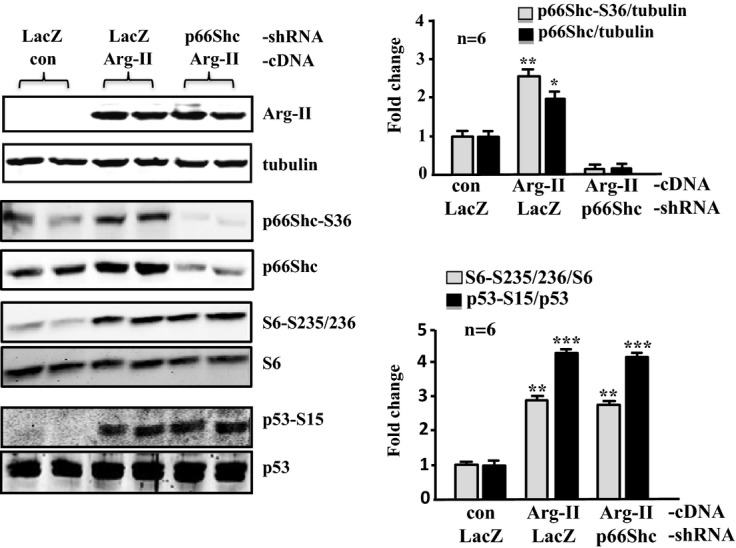Figure 6.

Silencing p66Shc in young VSMCs does not affect Arg‐II‐induced activation of S6K1 or p53. The young VSMCs were first transduced either with rAd/U6‐LacZshRNA as control or rAd/U6‐p66ShcshRNA. Twenty‐four hours after the first transduction with rAd/U6‐shRNA, cells were then transduced either with rAd/CMV as control (con) or rAd/CMV‐Arg‐II. Experiments were carried out 72 hours after the second transduction. Immunoblotting analysis (left) reveals the overexpression of Arg‐II, the silencing efficiency of p66Shc, and the effects on S6‐S235/236 and S6, p53‐S15, and total p53. Tubulin served as a loading control. Quantification of the signals is shown in the bar graphs on the right (n=6). *P<0.05, **P<0.01, ***P<0.001 vs control. Arg‐II indicates arginase‐II; VSMC, vascular smooth muscle cell; rAd, recombinant adenovirus; SA‐β‐gal, senescence‐associated β‐galactosidase; H2DCF, 2′,7′‐dichlorofluorescein.
